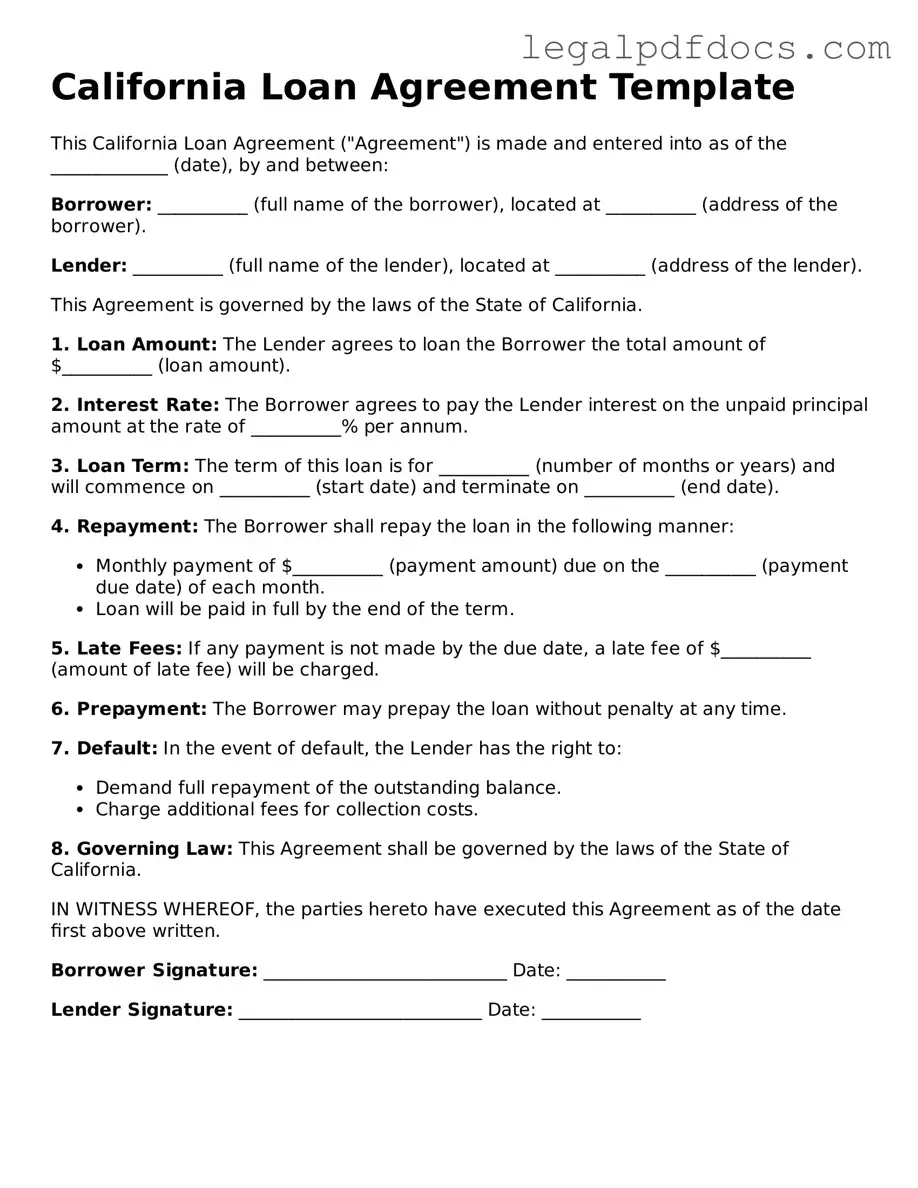The California Loan Agreement form serves as a crucial document for individuals and entities engaging in lending transactions within the state. This form outlines the terms and conditions under which a borrower receives funds from a lender, ensuring that both parties have a clear understanding of their rights and obligations. Key components of the agreement include the loan amount, interest rate, repayment schedule, and any collateral that may secure the loan. Additionally, the form addresses potential fees, default conditions, and remedies available to the lender in case of non-compliance. By clearly delineating these elements, the California Loan Agreement helps to minimize misunderstandings and disputes, fostering a more transparent borrowing process. Whether for personal loans, business financing, or real estate transactions, this form plays an essential role in facilitating secure and responsible lending practices throughout California.
